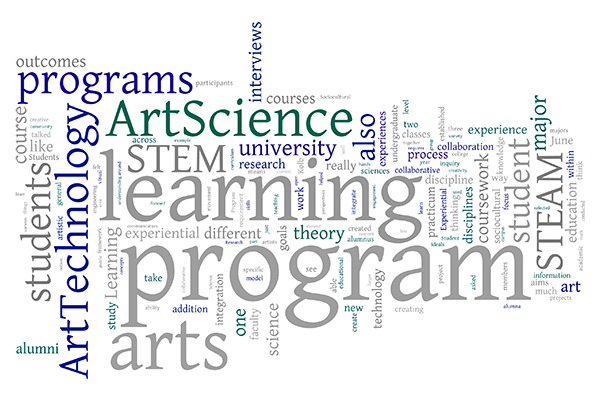International Journal of Education & the Arts | |
Volume 16 Number 7 |
June 9, 2015 |
Learning Across Disciplines: A Collective Case Study Of Two University Programs That Integrate The Arts With STEMSheena GhanbariUniversity of California, San Diego, USA
Citation: Ghanbari, S. (2015). Learning across disciplines: A collective case study of two university programs that integrate the arts with STEM. International Journal of Education & the Arts, 16(Number 7). Retrieved [date] from http://www.ijea.org/v16n7/.Abstract There has been some debate and research that suggests the arts are well-suited to be combined with science, technology, engineering, and math disciplines making the STEM acronym STEAM. STEM education is an educational and political priority in the United States and is valued as a means of strengthening national security and ensuring global competitiveness. The STEAM paradigm also emphasizes the importance of STEM education, but argues that the arts have the ability to open up new ways of seeing, thinking, and learning. This study aims to share student learning experiences in two established university programs that integrate an arts discipline with a STEM discipline. Student and alumni interviews are compared within a collective case study methodology. Framed by principles of sociocultural theory and experiential learning theory, this inquiry explores the role of arts integration, collaboration, and experience centered learning in knowledge creation.
Visual Abstract
|

